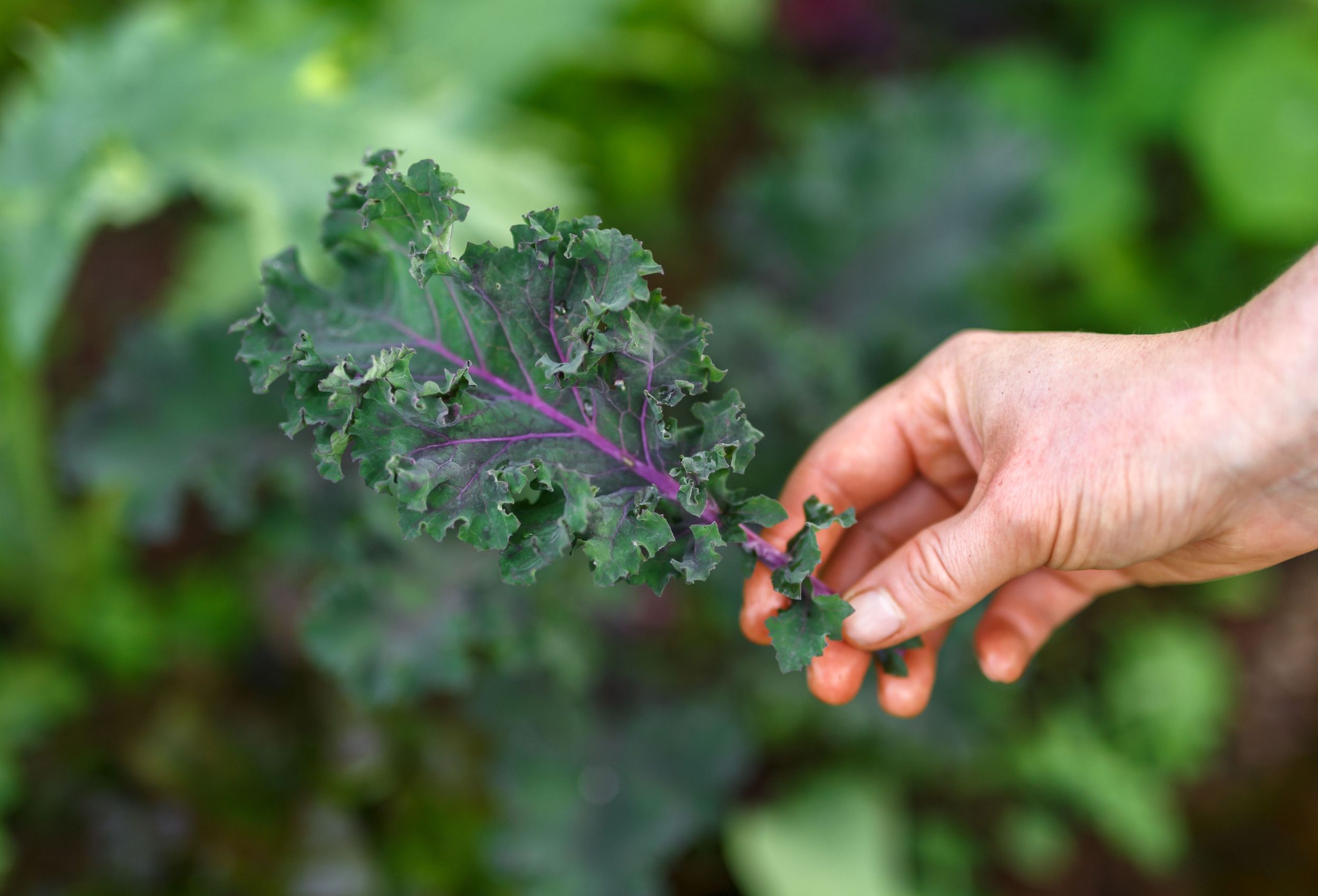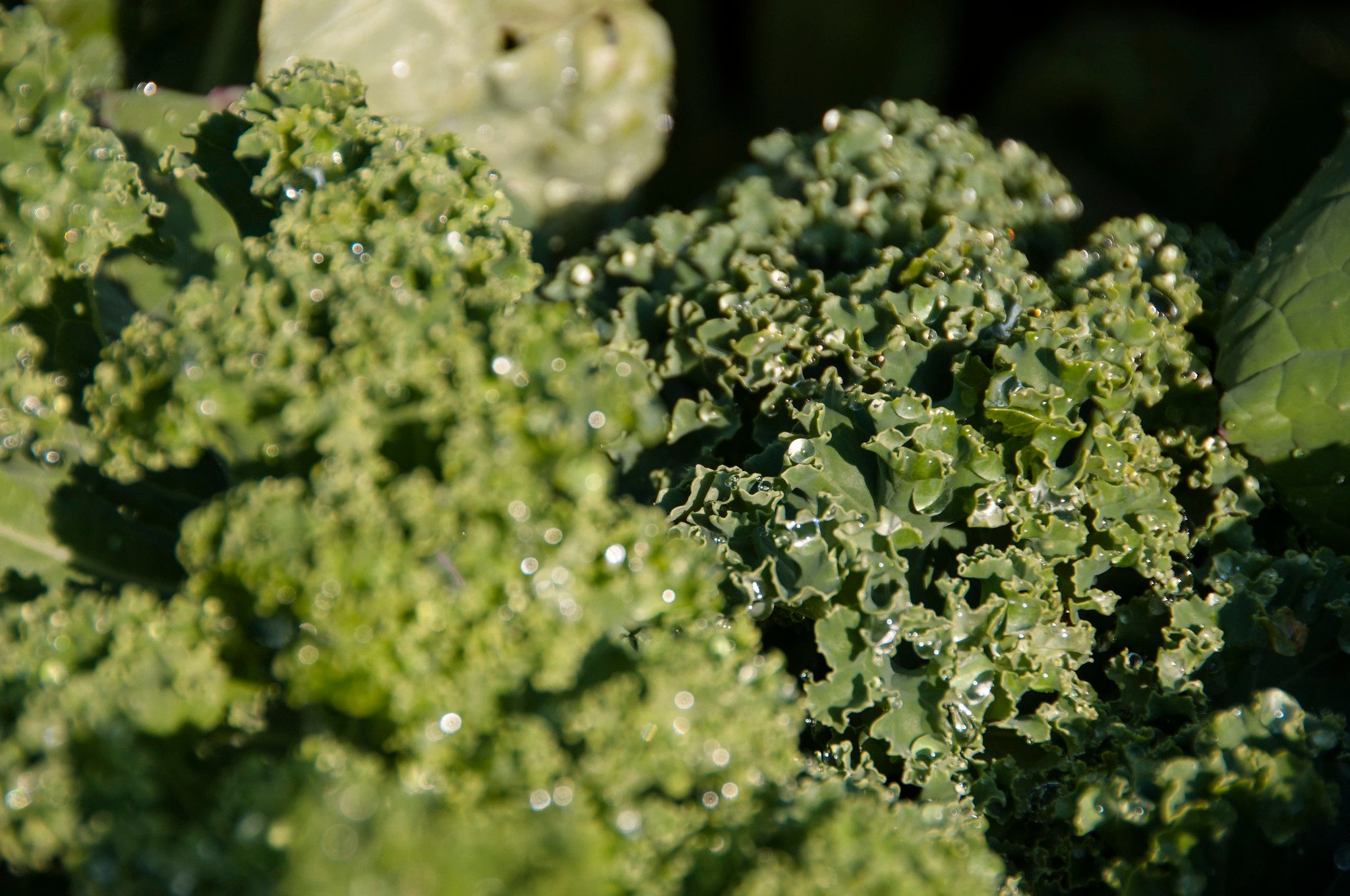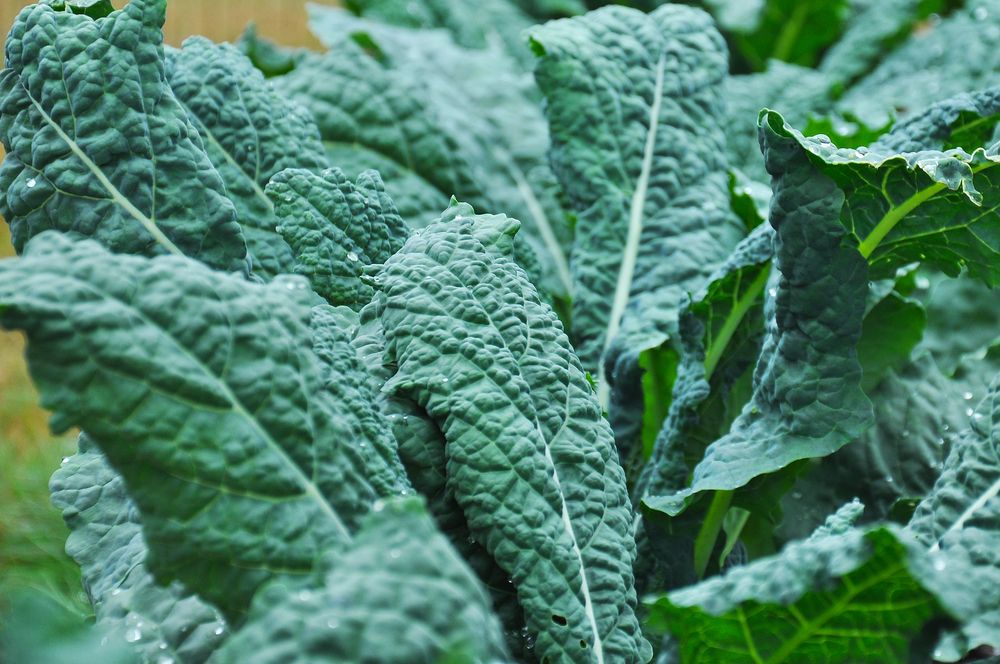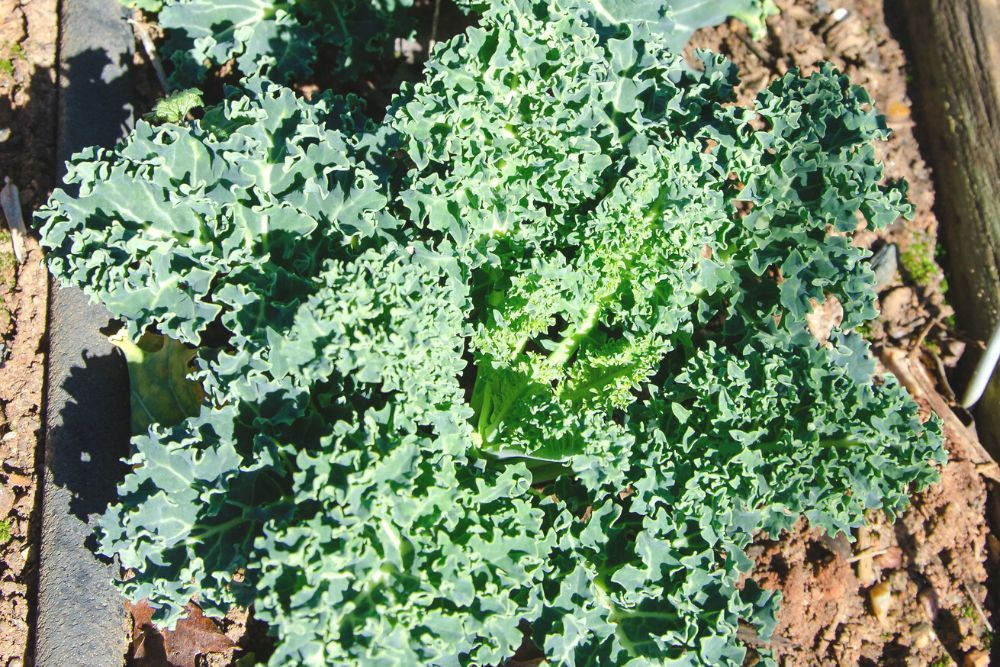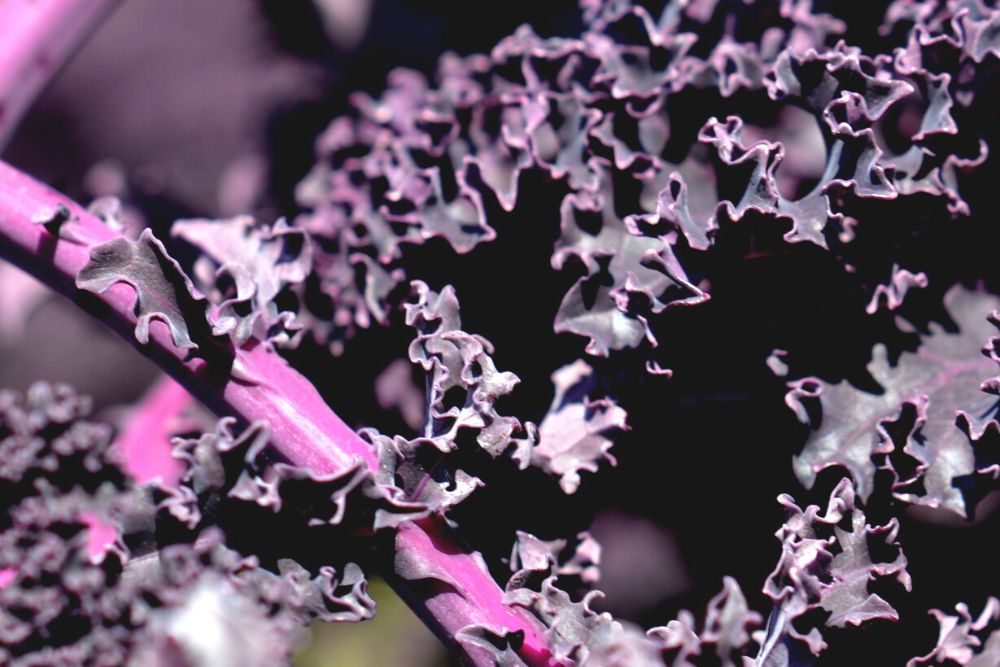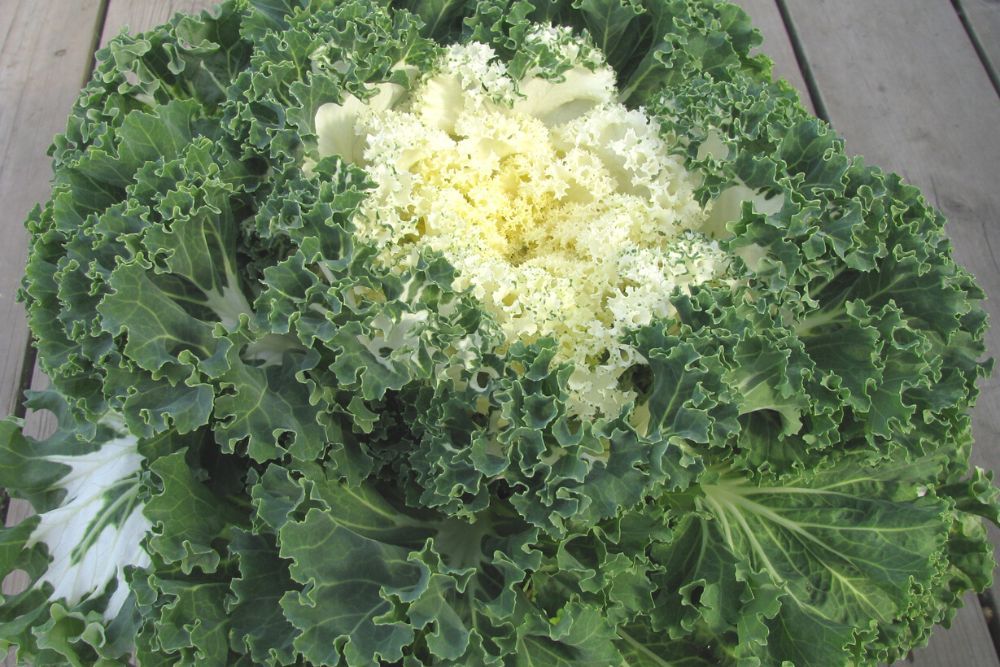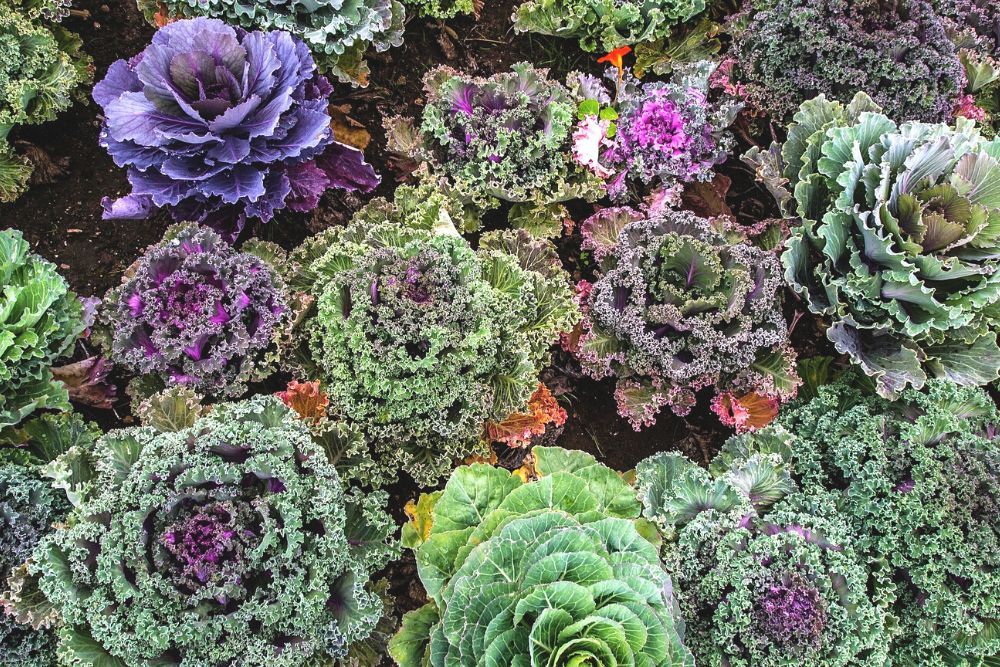Kale is a must-have, trending leafy green to grow in your garden. It belongs to the mustard family (Brassicaceae), along with cabbage, Brussels sprouts, and broccoli. With healthy eating taking the spotlight on the cooking scene, kale has captured the hearts of many gardeners and chefs alike. It's full of antioxidants, as well as calcium and potassium. So it's not only delicious, but it's also healthy for you!
Are you ready to start growing? Discover five types of kale you can cultivate this year. Then, get ready to enjoy a scrumptious harvest!
Winterbor
Image credits: Andria via Flickr
A popular variety, You can harvest baby leaves from 'Winterbor' in as little as 28 days. So if you are eager to harvest fresh kale for your salad, 'Winterbor' is a perfect choice.
If left to mature, these kale plants will grow 2 to 3 feet tall, with leaves about 24 inches long. The tender green baby leaves will lose some of their ruffles and turn a blueish shade as they age.
Tuscan
Image credits: John E. Manuel via Shutterstock
In contrast to the vibrant green leaves of 'Winterbor,' 'Tuscan' kale is naturally more blue-grey. Alternative names for this type include 'Lacinato,' 'Palm Tree,' and 'Dinosaur.' It has leaves that grow upright and usually get less dirty, making it an outstanding choice for home chefs.
Rinsing will be a breeze when you're prepping it alongside delectable lettuce varieties for your salads. Plus, you'll get an abundant harvest! The foliage on 'Tuscan' kale grows up to 2 feet long, so there will be plenty for your fresh recipes.
Vates Blue Curled
Image credits: Mark Levisay via Flickr
'Vates Blue Curled' is easy to spot with its curls and ruffles! This type has vibrant blue-green foliage, typically 12 to 14 inches long, while the whole plant reaches up to 18 inches. It is a highly favored variety because it does well in colder temperatures.
With all of those curls, it can be trickier to clean. Before you cook with it, make sure to thoroughly wash the leaves. This variety is a flavorful addition to many dishes such as salads and stir-fry, and it even makes delicious kale chips!
Fun Fact: You can harvest kale until it gets as cold as 20 degrees Fahrenheit. The first frost of the season can even make it tastier.
Redbor
Image credits: Tracie Hall via Flickr
With deep purple and burgundy hues, 'Redbor' is a stunning addition to any vegetable garden. Similar to 'Tuscan' kale, 'Redbor' has foliage that stands up. It has strong stems that keep the leaves upright and can grow 2 to 5 feet tall.
As temperatures drop in autumn, its color deepens, and after the first frost of the season, the plant will get sweeter, too. If you are planning an autumn vegetable garden, make sure to include 'Redbor' kale for a beautiful and delicious harvest that you can gather until just after you get frost.
Chidori
Image credits: Serres Fortier via Flickr
While kale is a popular choice for vegetable gardens, it can complement ornamental gardens beautifully. 'Chidori' kale belongs to Brassica oleracea as well. However, unlike other varieties, gardeners cultivate it for its stunning hues. Flowering or ornamental kales are generally very bitter. So they are fantastic to include as part of a garden design, but you should avoid using them in the kitchen.
When planting ornamental kale, you will see an elegant array of colors pop as temperatures drop below 50 degrees Fahrenheit. These plants can survive in temperatures as cold as 5 degrees Fahrenheit. Depending on your region, they are a lovely way to keep your winter garden vibrant into November and even December!
Keeping Your Kale Happy
Image credits: Publimode via Pixabay
There are a few easy-care requirements to follow to keep your kale happy. As a general rule, kale plants need a minimum of six hours of sunlight every day. So pick a spot that gets plenty of sunshine! They also require soil that drains well.
Then, make sure to water your kale plants regularly. Each week they will need about 1 gallon of water for each square foot of your garden. If seasonal rain doesn't provide this, pick up your watering can and head outdoors!
Remember, kale loves cool weather. You can plant kale seeds in spring when temperatures reach 40 degrees Fahrenheit. Then harvest it before summer heat waves above 75 to 85 degrees Fahrenheit arrive.
Don't worry -- you can still enjoy kale later in the growing season! Plant again when temperatures drop, usually about three months before the last frost of the season or when it's below 75 degrees Fahrenheit again.
Exquisite Types of Kale
Kale is a wonderful plant to grow, whether you want to harvest vegetables or enjoy a spectacular ornamental garden into the winter. With so many delicious varieties, there are plenty of options for gardeners who love to hop in the kitchen too! Even if you are simply looking for a pop of color, kale has you covered. Ornamental types like 'Chidori' will display bright hues well into cold weather!
So what are you waiting for? Start growing today! Then share your experiences in the comments below to help fellow gardeners successfully cultivate kale.

